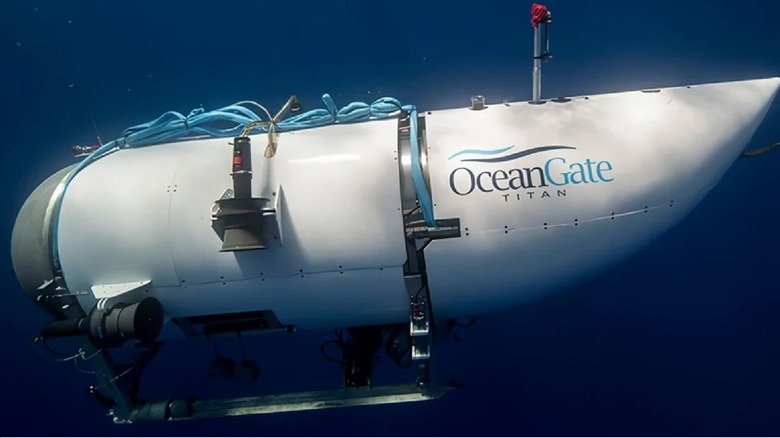Titan Submersible Wreckage Seen For The First Time After Being Recovered From Sea Floor
Debris from the Titan submersible, which imploded last week, has been returned to land. The Associated Press reports that parts of the craft, which includes a section of its white outer shell, have been returned to port in St. John's, Newfoundland and Labrador, Canada. The debris was recovered from the ocean floor by remote operated vehicles (ROVs). ROVs were also a key part of the initial search for the missing sub. The debris is being recovered as part of the ongoing investigation into what, exactly, caused the catastrophic failure of Titan's pressure vessel. Various outlets have asked numerous organizations for comment, but many refuse to elaborate on what is still an ongoing investigation.
In a statement, one of the organizations involved, Pelagic Research Services, confirmed that it is "still on a mission" before adding that its team members "have been working around the clock now for ten days, through the physical and mental challenges of this operation, and are anxious to finish the mission and return to their loved ones."
A debris field containing parts of the submersible was discovered on June 22, after a frantic days-long search involving numerous governmental and private organizations. Despite an initial belief that the Titan could have resurfaced, or may have been left stranded at the bottom of the ocean with its crew still alive and surviving on an emergency oxygen supply, it was eventually established the sub imploded on its initial descent. All five people on board were killed.
An unfortunate end to an optimistic search
Initially, it was hoped that the Titan's crew could be rescued, despite the challenges that come with a deep ocean rescue. The governments of Canada and the United States contributed vast resources to the search, and private companies also sent specialist vessels and equipment to help out. There was optimism when sonar picked up a knocking sound that seemed to occur every 30 minutes. Even when the emergency oxygen was due to run out, rescuers refused to give up hope and continued the search.
Unfortunately, four days in, debris from the sub was discovered and it became obvious that there was no chance of finding any survivors. Since then, fingers have been pointed at the vessel's construction and design. Footage has also emerged of Ocean Gate CEO Stockton Rush, who was on board Titan when it was lost, bragging about breaking rules and talking dismissively about safety certifications. Shahzada Dawood, Suleman Dawood, Paul-Henri Nargeolet, and Hamish Harding were also aboard the Titan when it imploded.
As for those on board the submersible, the implosion likely happened before any of them even knew something was wrong. The investigation, led by the Coast Guard's Marine Board of Investigation, will undoubtedly reveal more details about the exact cause, but failure of a pressure vessel at that depth can occur in a fraction of a second.
The investigation is currently ongoing
While authorities are pretty certain that a catastrophic implosion caused the loss of the Titan and the deaths of all on board, the exact cause is still unknown. Two possible points of failure have been highlighted: the sub's carbon fiber hull, and the plexiglass in its port hole. Carbon fiber is a useful material in many ways; it is incredibly light and very strong. However, when it fails, it tends to do so without warning and do so spectacularly.
There is a good chance that none of the debris researchers have recovered comes from the carbon fiber hull, as it may have completely disintegrated during the implosion. The stresses of the previous successful trips Titan had made to the Titanic may have caused near impossible-to-spot damage to the hull. That damage could have then been enough to cause a catastrophic failure this time around. Then there is the plexiglass window designed to allow passengers to view the wreck in person. The New Republic reported allegations that it was not rated for anywhere near the depth Titan was diving to. It is worth noting that the titanium end cap that investigators recovered was missing the plexiglass from its porthole.
Investigators are certainly taking the matter seriously, with both the U.S. and Canadian governments looking into the incident. The United States Coast Guard has convened a Marine Board of Investigation to look into the Titan's implosion. This is the highest level of investigation the Coast Guard can conduct and means that the Titan's loss is being treated as a major maritime incident. The items recovered will hopefully reveal both physical and digital data, allowing investigators to work out exactly what went wrong.
Update: The United States Coast Guard said in a statement that potential human remains were discovered amid the wreckage, the BBC reports. Medical experts will analyze the findings and the data will contribute to the ongoing investigations into the cause of the incident.

